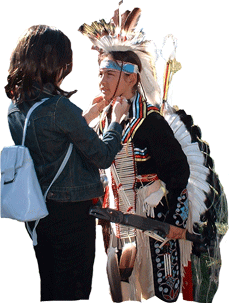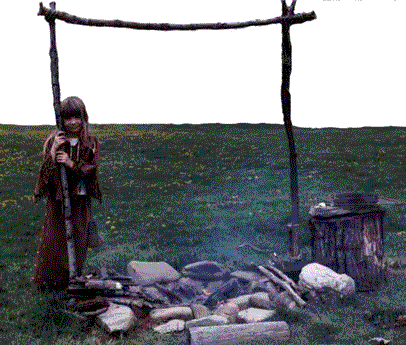 Native Americans Today
Native Americans Today
There are several articles below and links to follow.
| Joy Harjo Becomes the First Native American U.S. Poet Laureate |
| Harjo – a longtime poet and member of the Muscogee Creek Nation – is known for infusing Indigenous social justice issues into her poetry.
Her poem “Remember” was featured in Rethinking Columbus, edited by Rethinking Schools editors Bill Bigelow and Bob Peterson. Rethinking Columbus includes more than 80 essays, poems, interviews, historical vignettes, and lesson plans to critique the myth of Columbus and center the lives of Indigenous people in the curriculum. About her appointment as Poet Laureate, Harjo told NPR: “It’s such an honoring for Native people in this country, when we’ve been so disappeared and disregarded.” We are inspired to hear of Harjo’s appointment and wish her success raising consciousness about Native issues and spreading the gift of poetry. – Rethinking Schools. |
Over 72 percent of Native Americans live in urban areas, according to the U.S. Census. Many Native people although sometimes thousands of miles away from their traditional homeland, still speak their languages or maintain ties with their reservation or Indian communities, but often with some struggle.
Native Americans today face many different issues. Some are old, some are new and some are on-going. Use the buttons below to additional web pages that will give you an insight into a few of these issues.
The negative stereotyping, that began so long ago is still prevalent today and serves as an effective vehicle for discrimination and prejudice that inevitably leads to exploitation. Such wrong attitudes and unfair actions can be prevented or changed and corrected only through education.
Although the government and people of the United States express outrage at oppression and abuse of indigenous people in other countries, Native Americans continue to be a dispossessed and disenfranchised minority in their own land.
Third-world living conditions are typical of most reservation communities. Poor health care, miserable poverty and substandard education are a daily fact of life for most American Indians. The top 5 causes of death among native people are alcohol related, and more native teens commit suicide than any other racial group. Native Americans also have a higher infant mortality rate.
Although the federal government spends over $3 billion annually on Indian programs for federally recognized Native Nations, estimates indicate that only ten cents in every dollar actually reaches those desperately in need.
Please read our other web pages for more insight:
Census Health Issues (Teen Suicide) Women’s Issues Native Warriors Indian vs. Native Lewis & Clark Boarding Schools Stereotyped Images Social Issues (Natives in Prison)
Their eyes are bright, their minds are clear and aware.
Their every being speaks of strength and courage.
Their souls are calm as the still waters. With pollen in hand, a prayer on their lips, they set forth on the long journey stretching away before the time.
 As the sise words of their grandfather echoes in the hose of their minds, they walk the pollen path of beauty.
As the sise words of their grandfather echoes in the hose of their minds, they walk the pollen path of beauty.
They are the children of the People. – Cecelia Nez
Editing by Matthew Lewis. sdc Journal #1040 3/4/08

Lenape Lack State Recognition
The Lenape were a PEACEFUL PEOPLE who welcomed others to their homelands, and were respected by many tribes as “Grandfathers” in the great councils of the Algonquians.
They did not all disappear. Although some migrated north to Canada or west to Ohio, Wisconsin, Indiana, Kansas, Idaho and Oklahoma, most of them stayed right here in Pennsylvania and are still here today! Today’s Lenape people work, play, and reside in the community, just like you do.
The Lenape Coalition has worked for over 25 years to gain State Recognition for Lenape descendants. For additional information, please see the webpage on Recognition.
VICTORY FOR NATIVE AMERICAN RELIGIOUS FREEDOM
November 19, 2008
Marjorie Esman, ACLU of Louisiana Executive Director (504) 522.0628 x. 23Today the ACLU of Louisiana (ACLU) and the Native American Rights’ Fund in Boulder, Colorado (NARF) announced a victory on behalf of a Native American child attending publicschool in St. Tammany Parish. Curtis Harjo is a five-year-old Native American child who wears his hair in a neat braid down his back. The Harjo’s religion, like that of many Native Americans, includes a belief that hair should not be cut, except as a symbol of mourning upon the death of a loved one. The principal at Curtis’ elementary school advised his mother that he would be required to cut his hair to continue to attend school even though to do so would violate his family’s religion.
The ACLU and NARF represented Curtis and his mother, Joni, in their fight to stand up for the rights of all Americans to exercise their religion, and to express themselves culturally. The principal rejected the Harjo’s request for an exemption to the dress code. The Harjos appealed, but the Superintendent of Schools, Gayle Sloan, ruled that Curtis could only attend school if he wore his hair in a bun. Because doing so still suggests that Curtis must hide his religious beliefs, the Harjos appealed that decision to the St. Tammany Parish School Board, in the letter attached.
The ACLU has just learned that Superintendent Sloan reversed her previous decision, and has decided to allow Curtis to attend school and continue to wear his hair in the single neat braid with which he began the school year, and which is consistent with his religious principles.
“We are so glad that Curtis Harjo and his family bravely stood up for their religious and cultural rights,” said Katie Schwartzmann, ACLU of Louisiana Legal Director. “All religions are equally deserving of respect and protection. Curtis should be allowed to wear his hair in keeping with his religious and cultural identity, just as a Christian student should be allowed to wear a crucifix to school. The Constitution protects the rights of all children and parents.”
“We just wanted Curtis to be able to go to school without prejudice,” said Joni Harjo, mother of five-year-old Curtis Harjo. “It might seem to some people that Native Americans are gone, but we are not. We are still here, and I think we just had to open the school’s eyes to that. It is very important for Curtis to be able to go to school and be himself. We are so happy.”
Steven Moore, an attorney with the Native American Rights Fund, stated, “we at the Native American Rights Fund are pleased that Superintendent Sloan made the correct and just decision here. It shows that she paid careful attention to the facts, especially to the sincerely held beliefs of the Harjo family, in reaching her decision. This sets an important precedent in St. Tammany Parish, and throughout the United States, where local school districts are asked to understand, respect and work with the beliefs and traditions of Indian people with school age children. We are elated for Joni Harjo and her son, Curtis, and their family.”
The Harjo family was represented by Katie Schwartzmann, Legal Director of the ACLU of Louisiana, Stephen Pevar from the National Office of the ACLU, and Steve Moore of the Native American Rights’ Fund.
shayne del cohen [shayne@sprintmail.com] Journal #1241 12/19/08

